Pinhole Self-Portraits, by Alyson Belcher
Following text and photos by Alyson Belcher.
For the past 10 years I have been making self-portraits that combine pinhole photography and improvisational performance. When I began this series, I was looking for a way to photograph the human body that went beyond an objective rendering of the external form. The body is a vessel that contains and channels all of our experiences, thoughts and feelings. My photographic process (the use of movement and long exposure times) has allowed me to access and give visual form to what lies beneath the surface of the skin.
During the early part of my life, athletic activities were my primary focus. I was a competitive springboard diver from the age of 6 until about 25. My family has been very involved in dance as well, so I have always been surrounded by people who are interested in movement. I was never a dancer, but I have been strongly influenced by all kinds of dance. I began to seriously take photographs when I was a teenager, and since I was always at the pool, I photographed other divers. At first, I was interested in capturing the strength and grace of the body in flight. Over the years, I realized that I was trying to convey something more subjective: the experience of diving, of being in that body flying through the air. This is what eventually led me into the studio to make self-portraits. I didn’t think I could actually make photographs that conveyed what it felt like to dive. But I might be able to convey the experience of simply being present in my body.
My first self-portraits were made in an empty studio using only natural light—nothing but me and my pinhole camera. I wanted to create an environment that was free of distractions: no props, no lights, nothing that would interfere with my experience while I was in front of the camera. This quiet, empty space was a place where I could focus inward and be fully present in each moment. I didn’t even use a timer; I counted out the seconds of each exposure. While my studio has become a bit more cluttered over the years, I still keep my shooting space very spare and empty. I use a 4 x 5 pinhole camera and Polaroid T-55 positive/negative film. I still use primarily natural light, but I sometimes have to add a little extra fill light on dark days. My exposure times range from 30 seconds to 2 minutes. And I still count the seconds rather than using a timer.
The Polaroid T-55 film has been a key element in this work. It is extremely helpful for me to see each image immediately after it’s made so that I can check composition and exposure. I have developed a system of working from one image to the next, of creating a storyboard for each day of shooting. I don’t usually have a clear idea of what I want to do when I enter the studio each day. I might have a glimpse of an idea, so that’s where I begin. It might be a gesture or a movement I want to explore, or it may be a feeling I want to convey. But wherever I begin, the work each day always unfolds in an unexpected and organic way. I make the first picture (which is often not very interesting) and I look for something that I like—it could be the way a certain movement leaves traces of the body on the film, or it could be a gesture. In the next picture, I begin with that element and build on it. And I continue that way for several hours, until I have a series of about 20 pictures that illustrate my process of unfolding and discovery for that day.
Making self-portraits with a pinhole camera is a relatively blind process. I am both the photographer and the subject. There is no viewfinder or ground glass in the camera through which I can preview the image. There are a lot of variables, but that’s what I love about working this way. I have drawn some lessons from my diving days that have allowed me to embrace the element of uncertainty. In diving you have to learn how to balance relaxation and control. You have to be relaxed enough to let your body do the dive, yet you also have to maintain control to execute the dive correctly. You have to totally trust your body and you have to have a keen sense of kinesthetic awareness—knowing where you are in time and space. These things have become key factors in the creation of my self-portraits. The pinhole camera has allowed me to incorporate the element of improvisational movement as a way of exploring both physical space and inner experience simultaneously. Combining the long exposure times with movement reduces my ability to predict how an image will turn out, and often I am pleasantly surprised. The image making process takes on a life of its own.
This work has benefited from my willingness to put myself in emotionally and physically challenging situations. I am drawn to things that challenge me, to things that put me off balance. Initially, there was a fear in exposing myself. Like most people, I am uncomfortable in front of the camera. When I began this work, I wanted to see what would happen if I allowed myself to fully experience that discomfort, how it might shift and change over time. I have also been known to create physical situations for myself that are very difficult, if not impossible, to hold for the entire two minute exposure time. As I count out the time and my body strains to hold a position, unexpected movements are recorded on the film. These images are some of my favorites, for they surprise me the most when I peel apart the film.
One of the themes that has emerged in my self-portraits is the relationship between stillness and movement. Where does a movement or a gesture originate internally? Is it possible to ever be completely still? I have attempted to remain completely still for an entire exposure, but it’s really not possible. Even if I am just standing in front of the camera, I’m breathing and my heart is beating. Those subtle movements are recorded in the image.
Another theme in my work is the presence of multiple figures in a single image. These figures contribute a narrative quality to the work. In some photographs I appear to be interacting with myself, or there appears to be another person in the frame. Some viewers think that there are several different people in these photographs, but the figures are all me. The presence of multiple figures can represent the duality of the self, or different parts of myself interacting with one another.
When I’m moving in front of the camera, I have to move very slowly in order for any image to show up on the film. I have to remain still for about 10 seconds if I want the film to record any trace of my body. If I want my body to leave a more solid impression on the film then I may have to remain still for 30-45 seconds. So in the images where there are multiple figures, I held each one of those positions for at least 30 seconds. The movement is a slow, moving meditation in which I remain acutely aware of my body and my position in front of the camera. I do not mark out my positioning ahead of time. Rather, I trust my instincts to tell me when, how, and where to move.
This series of pinhole self-portraits began as an experiment and it has evolved into an ongoing visual journal. The focus for me has always been more on the process than the product. If I focus too much on getting a “good picture”, nothing works. When I am able to let go of expectations and leave room for the unexpected, the results are filled with mystery and magic. The best photographs have been the result of spontaneity and improvisation.
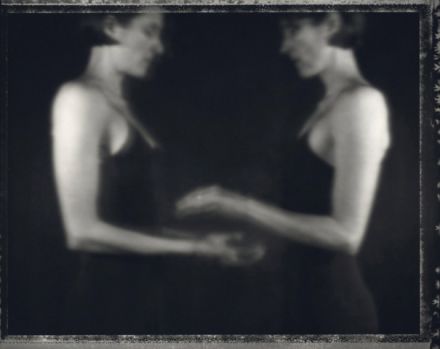
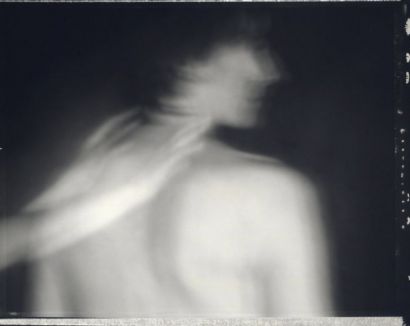
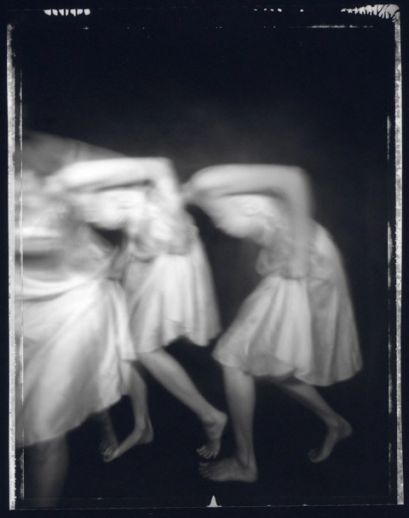
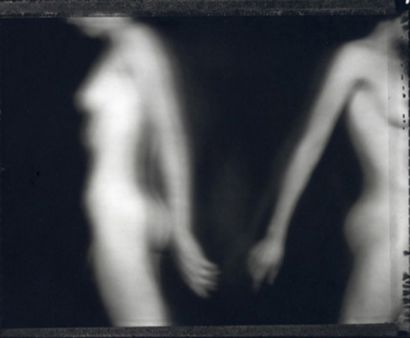
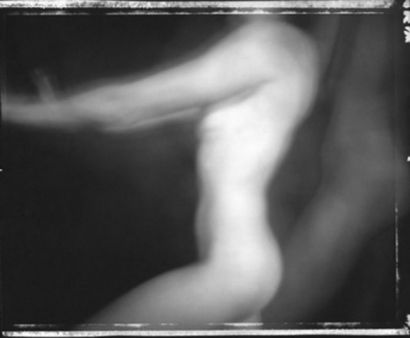
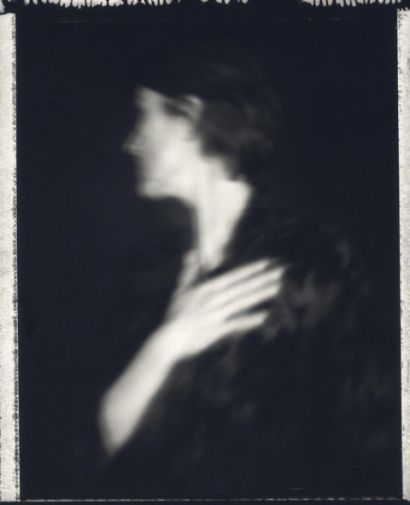
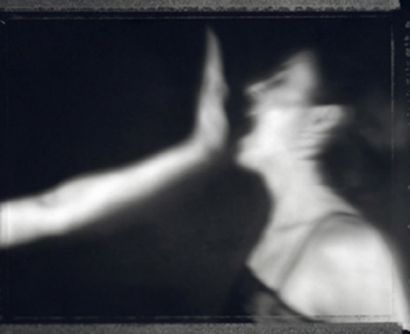
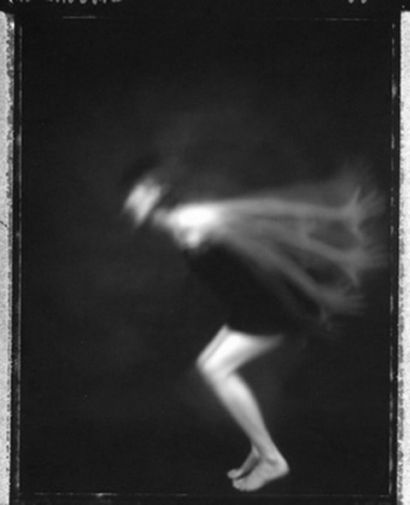
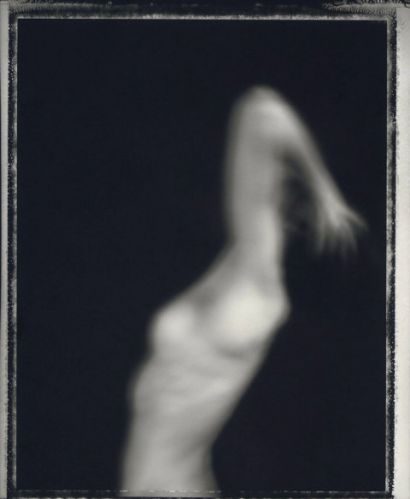





Sheila Bocchine, Pinhole Photographer
said, June 8, 2009 @ 3:42 am :
WOW! Absolutely gorgeous! I really like that you do them in black and white. The motion is dreamy and organic.
I especially love the headless dancer on page one, and the first 2 images on the third page.
zdjecia
said, July 10, 2009 @ 7:58 am :
Gorgeous ! Old School ! i Love Black and White Shots !
PJ Reptilehouse
said, November 13, 2009 @ 7:31 am :
I love the slow pace and the aspect of serendipity in your process. And I like the ghostly quality of the results.
Dean
said, November 21, 2009 @ 3:49 pm :
nice images, I love your work and hope to see more.
Jakub Krechowicz
said, April 21, 2010 @ 1:26 pm :
I like these pictures. Full of mood